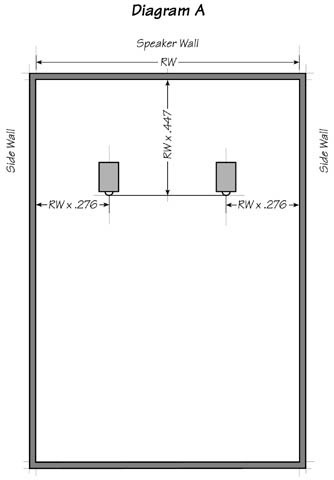Hi
1. Not much of a difference between placing a port on the front or back. As a port is a port and will output bass energy at its port tuning frequency. A front ported speaker can be placed closer to a back wall, beacuse the room gain added by the front port ( being farther away from back wall ), will be lesser than the room gain added by a rear port which is closer to the back wall. Thus, necessitating a rear ported speaker to be placed farther away from a rear wall.
2. Secondly, it is a real PITA to get the positioning of a rear ported speaker correct, since we now have two sources of bass, the driver in the front and the port at the back. So on most music we think we've got the placement right. Then on one track, the bass goes low enough to reach the port tuning frequency. And then the port let's rip, leading to a sudden boom. So it is easier to place a front ported speaker, since the bass driver as well as the port are on the same plane. And both will be equidistant from the rear and side walls.
3. If you want to go deeper with more complication, please Google "SBIR"

It is difficult enough to understand the same with a single bass driver, but try imagining it now with 2 sources of bass at each end of the speaker

4. Coming to speaker stands now. Every speaker is a vibrator. And there are sonic gains to be had by eliminating these vibrations. Making a cabinet that doesn't vibrate, needs a ton of money. So it is easier to address the vibration by one of the 2 below methods :
1. Coupling with spikes : floor standers couple to the floor and the room through spikes, there by increasing the vibrating mass, to dampen the vibration . With bookshelves placed on a stand, with speaker firmly attached to the stand, and stand coupled to the floor via spikes, we are doing something very similar.
Try placing bookshelves directly on the cabinet with spikes, this will couple the speaker to the cabinet. And will drain its vibrations into the cabinet. And if the speaker plays a frequency equalling the resonating frequency of the cabinet with sufficient output, then the entire cabinet will sympathetically vibrate. If the cabinet is heavy with lot of mass, then it might be beyond the speaker to make it vibrate, in which case you are fine. Just make sure to place the speakers with the front baffle either flush with front of the cabinet or slightly ahead, to avoid early reflections bouncing off the top of the cabinet.
2. If the cabinet is not heavy and inert enough, then the next solution is isolation. The small speaker stands like isoacoustics aperta etc, are designed to absorb vibrations upto their rated weight and not let them pass into the surface underneath. At the same time, they are draining the vibrations of the speakers into their tensioned springs.
There are folks who either like one or the other of the above implementations. Though absorbing the speakers vibrations with different materials like springs or absorbing pads seems to be more effective at nullifying the speaker vibrations.
Above is with a lot of generalisations, to make it simple to understand. Only way to find out is by giving it a try. I personally use isolation/ absorption method under all my speakers, and find the results to be to my liking. I would personally recommend trying the isoacoustics gaia footers, rated for your speakers weight under them. All the best


 www.ecoustics.com
www.ecoustics.com







